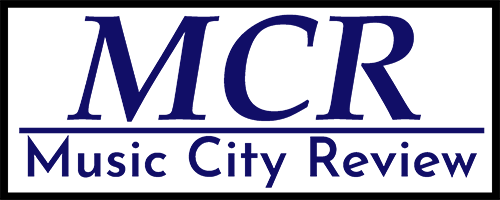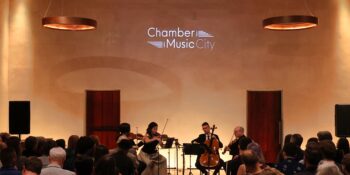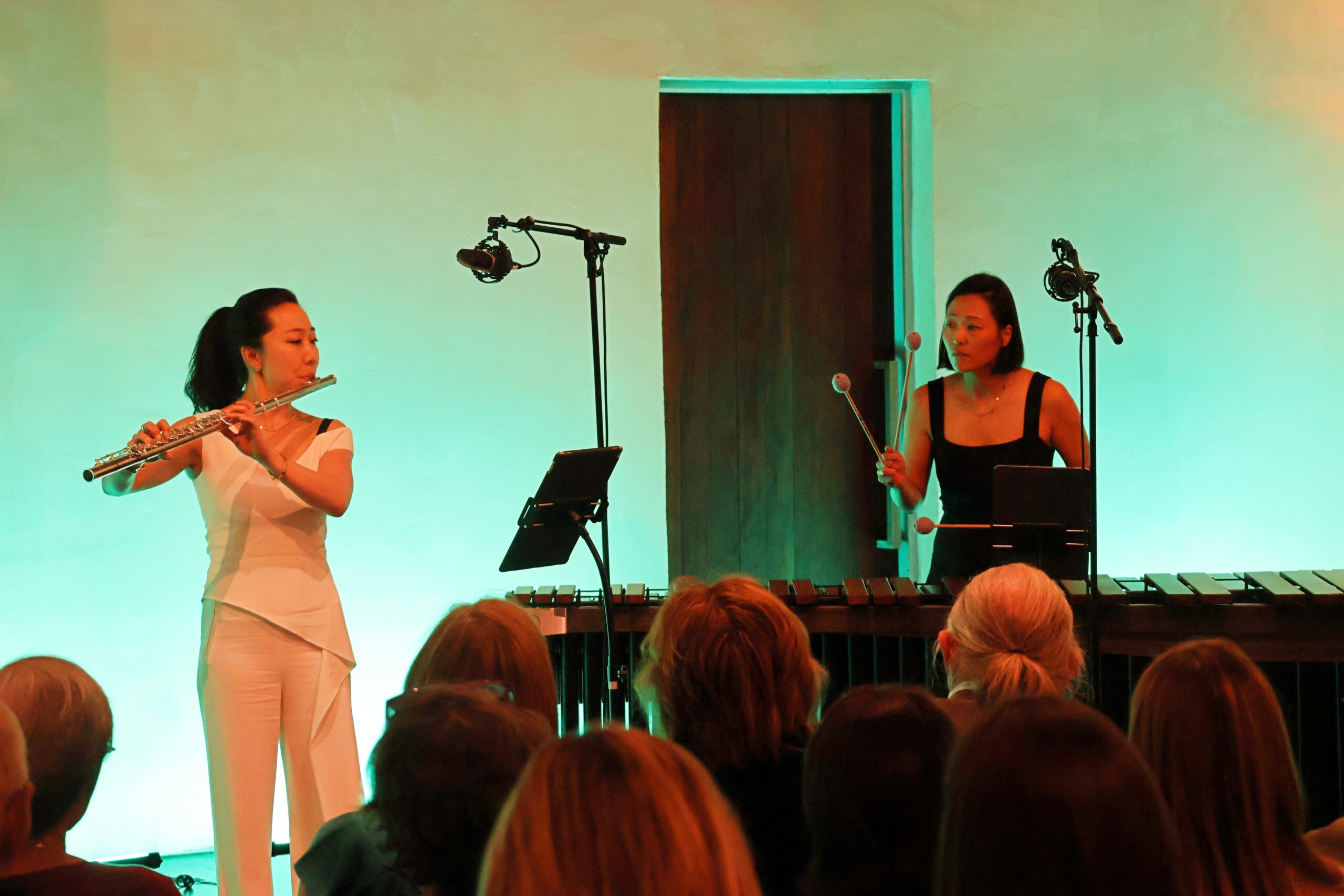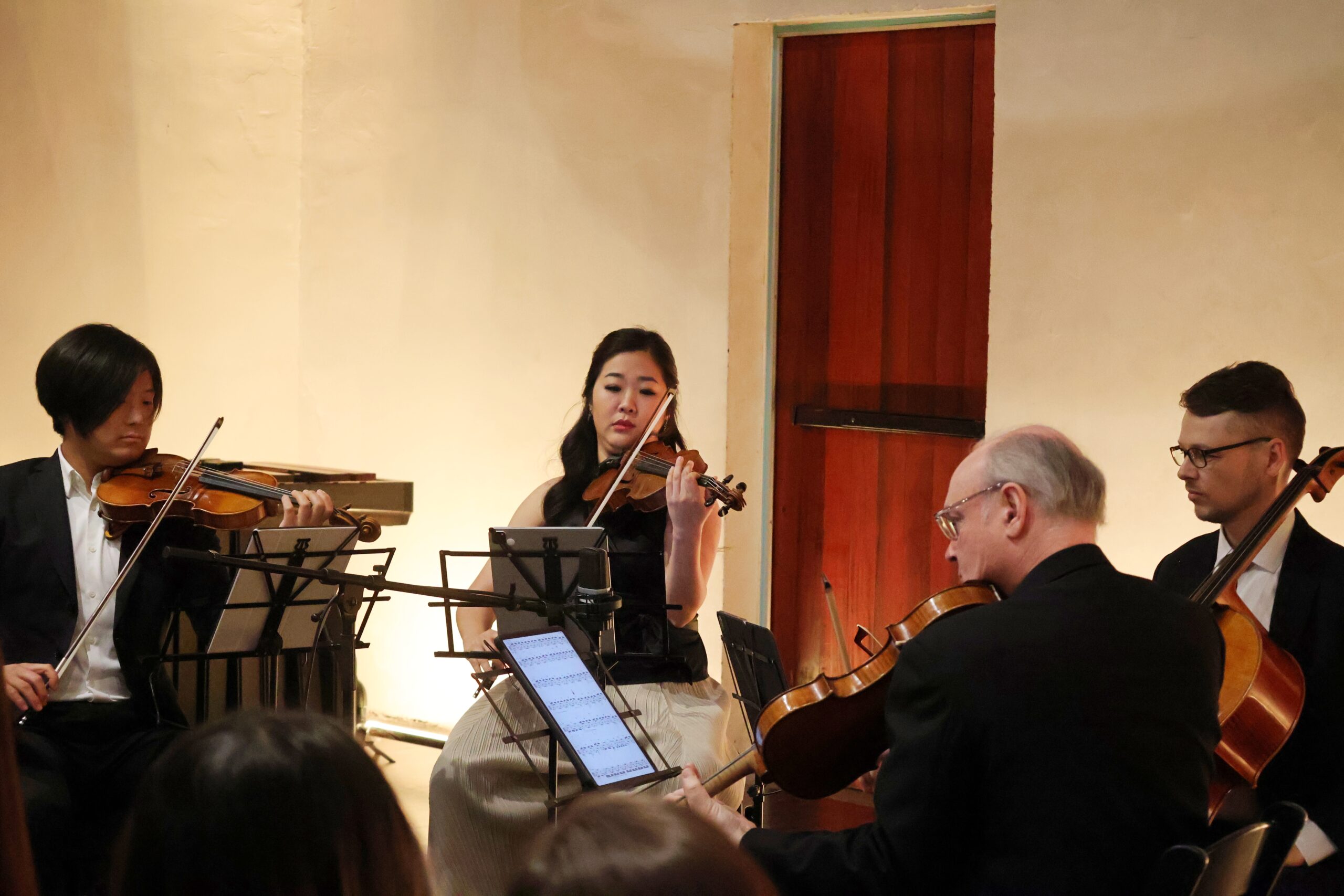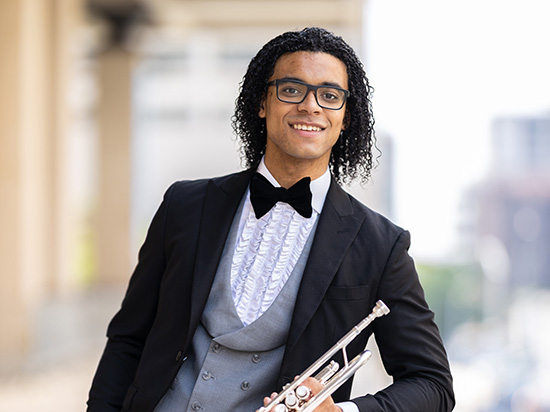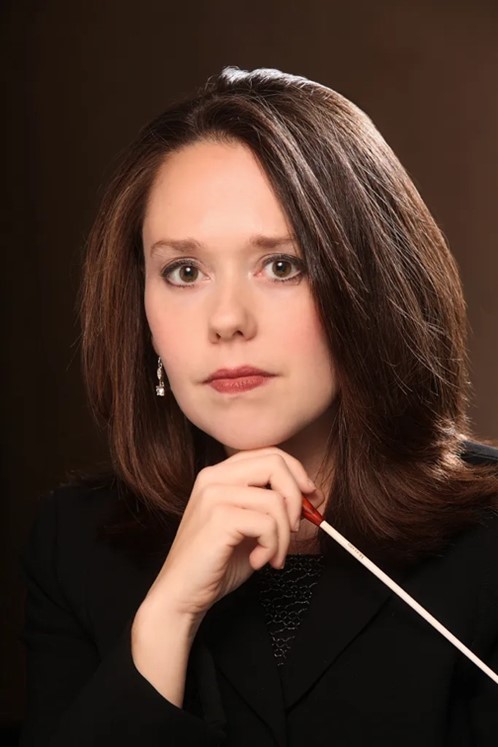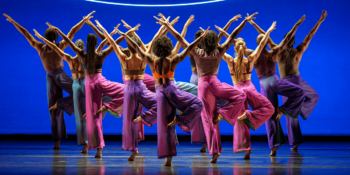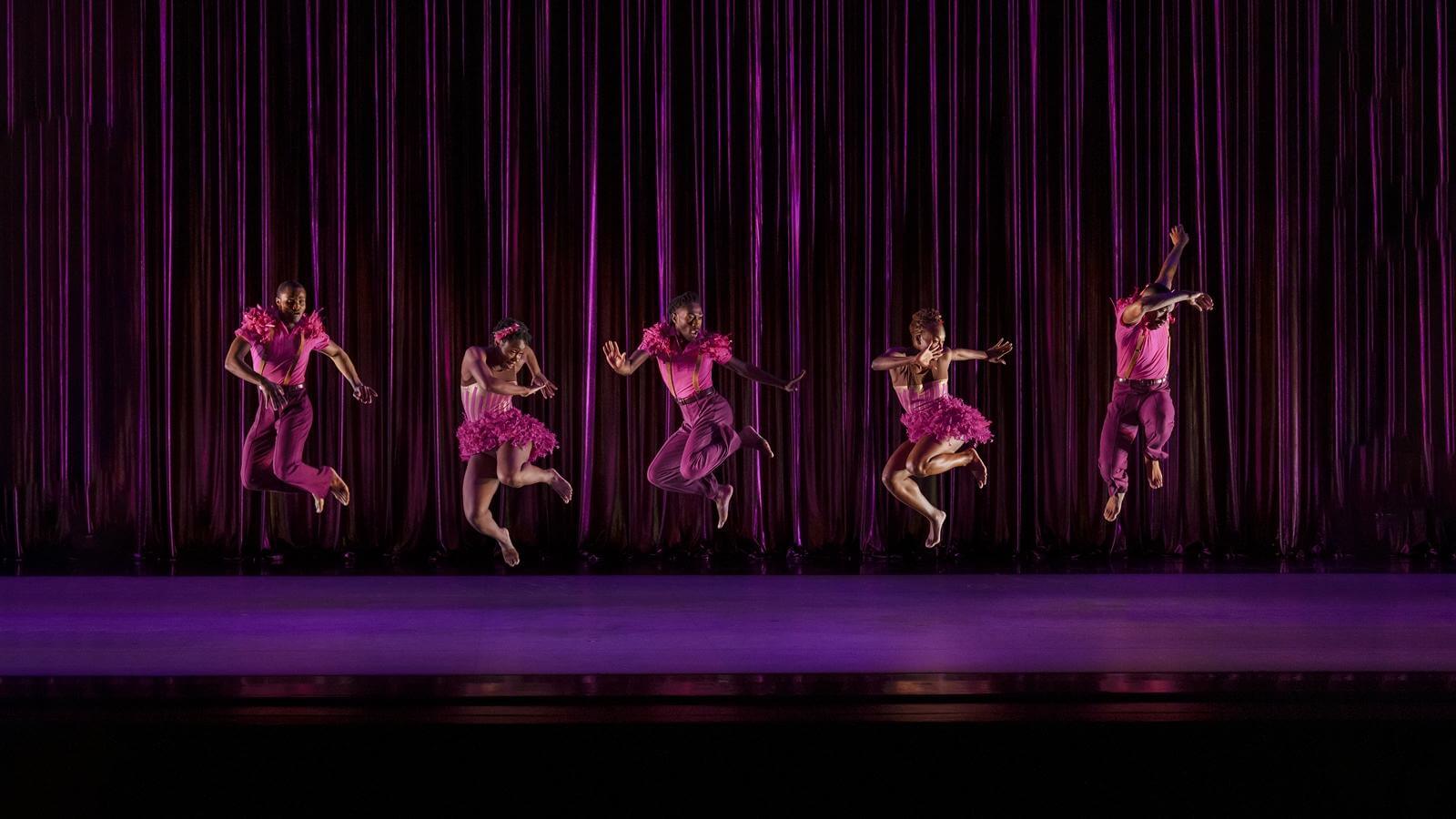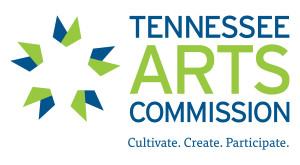From Our Far-flung Correspondents Series:
“Colorado Symphony – A Mile Above with Smyth, Prokofiev, and Brahms”
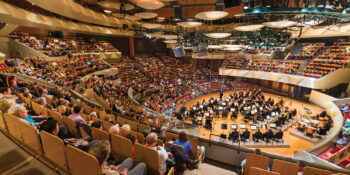
Performing at 5280 feet above sea level and giving at least 5281 reasons to fall in love with the Colorado Symphony, the music of Ethel Smyth, Sergei Prokofiev, and Johannes Brahms dazzled.
Celebrating its centennial artistic season, the Colorado Symphony is the only full-time professional orchestra in the greater Denver region. Presenting performances in various categories – Classics, Symphony Pops, Spotlight, Family, Holiday, Movie at the Symphony, and Alternative – the organization strives to fulfill its mission of being, “The future of live, symphonic music.”
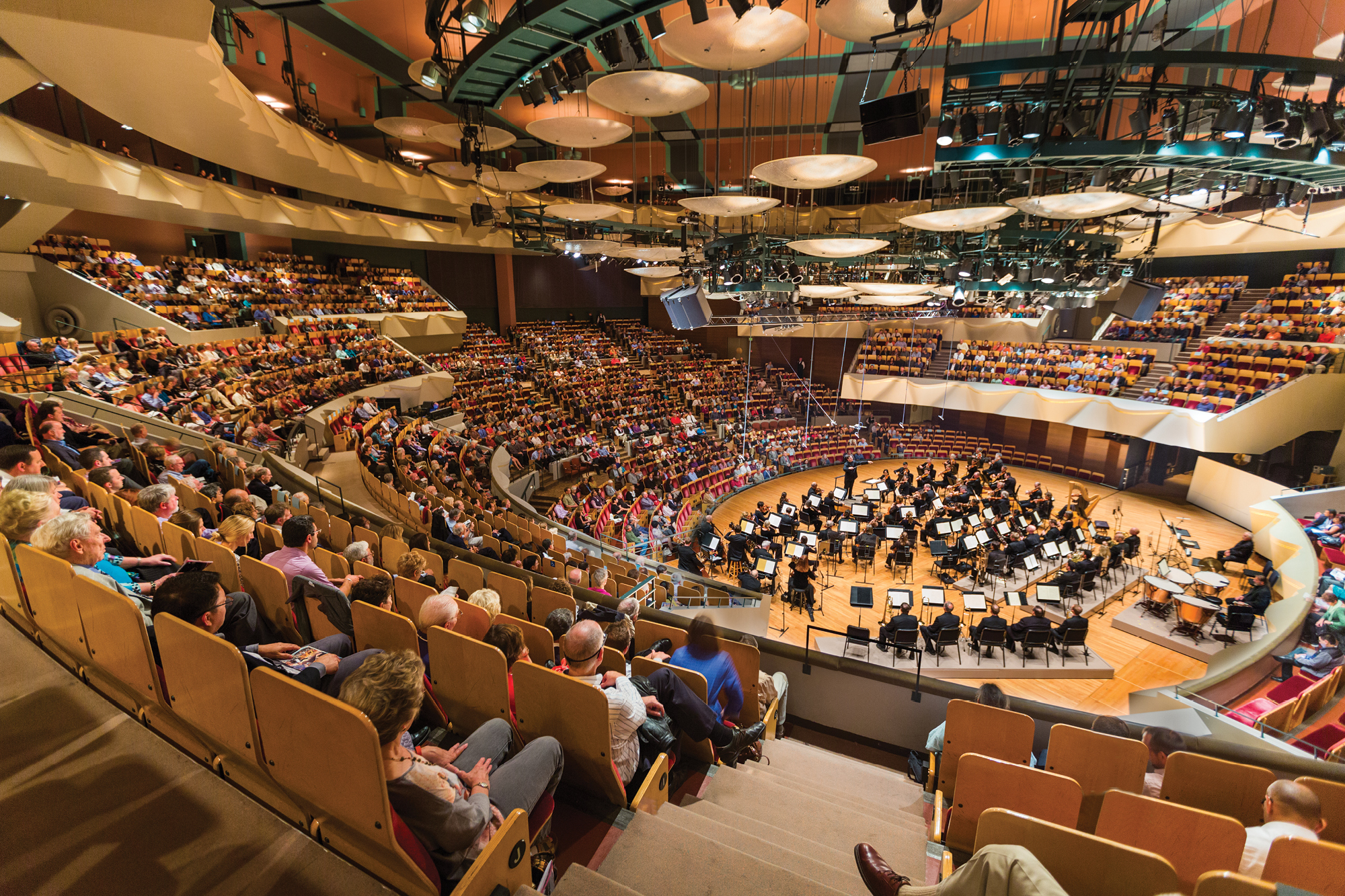
The Colorado Symphony’s primary residence is Boettcher Concert Hall. Built in 1978 and renovated in 1993, this venue is part of the Denver Performing Arts Complex, which also houses the Colorado Ballet, Denver Center for Performing Arts, Opera Colorado, and various national acts, local groups, festivals, conferences, and public events. Boettcher Concert Hall is the nation’s first symphony hall constructed in the round, resulting in 80% of the audience seats being within 65 feet of the stage. The seats themselves are also unique, having been designed with steam-bent plywood that acoustically simulate a full house regardless of actual audience size.
Before concerts within the Classics Series, violaist Catherine Beeson prepares interested patrons with a lecture that introduces the music soon to be heard in performance. Beeson makes materials available cited within her lectures, called Preludes, on her personal website within the Cool Nerd Stuff section. For this concert, Beeson crafted a thread through the program’s three pieces, the genesis of the lecture taking inspiration from High Anxiety, the psycho-comedy starring Mel Brooks.
Catherine Beeson is a perfect guide, able to introduce novices to concert music, while still providing enough content for those more learned – and all of this while making connections to current societal happenings. For example, Beeson referenced the current rap battle between Drake and Kendrick Lamar before introducing the following nuance about Johannes Brahms’ Symphony No. 3 and his well-known feud with Richard Wagner:
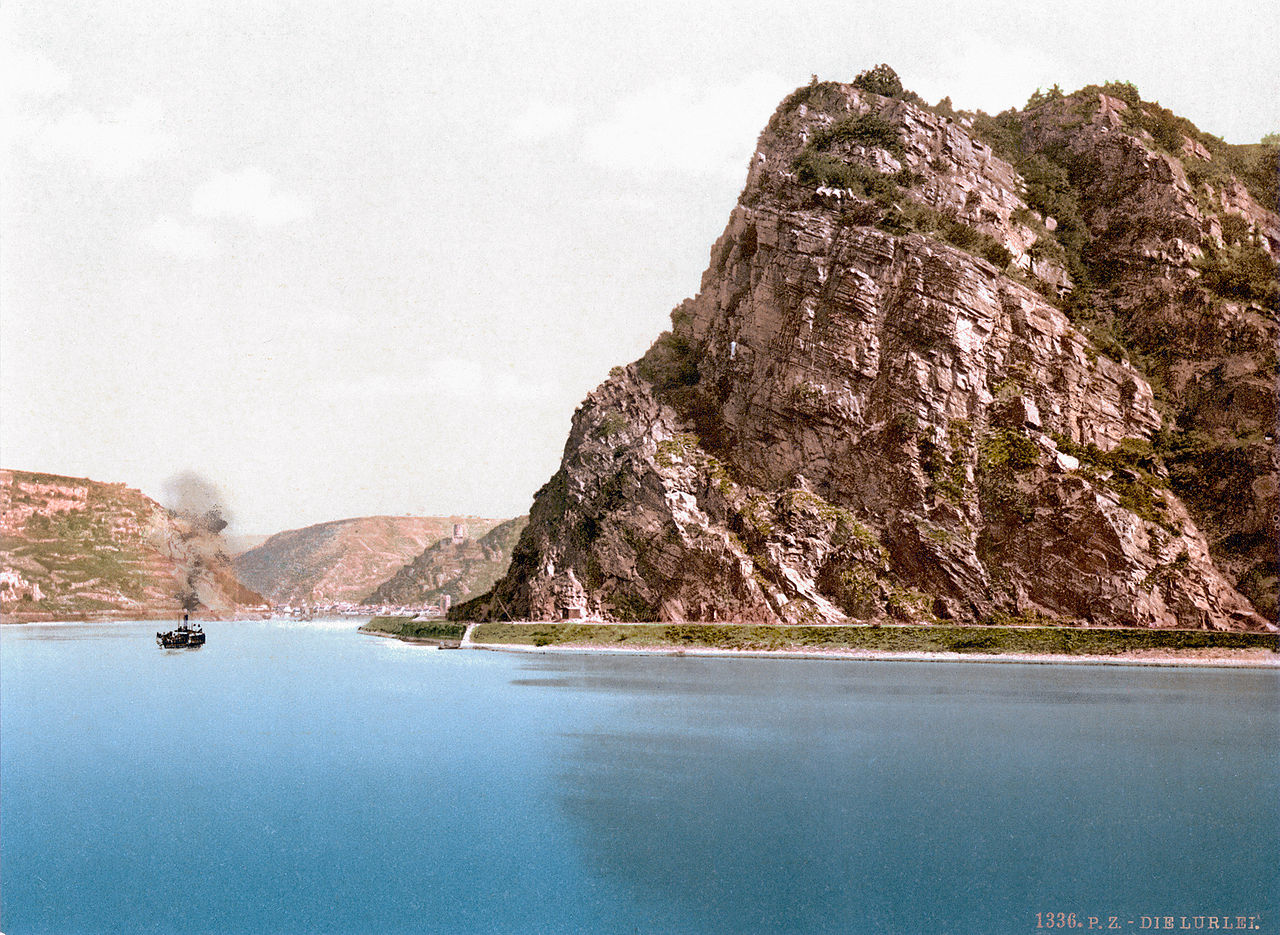
Random drama for you to chew on: Even though Brahms respected his work, he and composer Richard Wagner had a pretty nasty public feud going on, and even though Wagner died months before Brahms composed Symphony No. 3 the fur was still flying in the community so much so that Wagner supporters tried to wreck the Symphony’s premiere.
Random conspiracy theory for you to chew on: In his Symphony, Brahms included a musical quote from Wagner’s [Chorus of Sirens]. The spot on the Rhine River where Brahms composed the Symphony is also very near the infamous Lorelei rock cliff, named after the siren-like water spirit that lured sailors to crash their ships. Was [Brahms] honoring Wagner’s composition skills, mocking his death, OR WAS HE PREDICTING ETHEL SMYTH’S 1904 OPERA THE WRECKERS AND THIS WEEKEND’S PROGRAM LIKE A SYMPHONIC NOSTRADAMUS. You be the judge.
Shortly after Beeson was done preparing our listening, the Colorado Symphony took to the stage wearing all black, contrasting guest conductor Jun Märkl, who wore white tie and tails. Märkl serves as music director of the Indianapolis Symphony Orchestra and Taiwan National Symphony Orchestra, will become the chief conductor of the Residentie Orchestra the Hague beginning in 2025, and performs as principal guest conductor of the Oregon Symphony. The Colorado Symphony played well for Maestro Märkl throughout the evening; perhaps the aforementioned disconnectedness with respect to wardrobe didn’t penetrate the artistic relationship between conductor and ensemble.
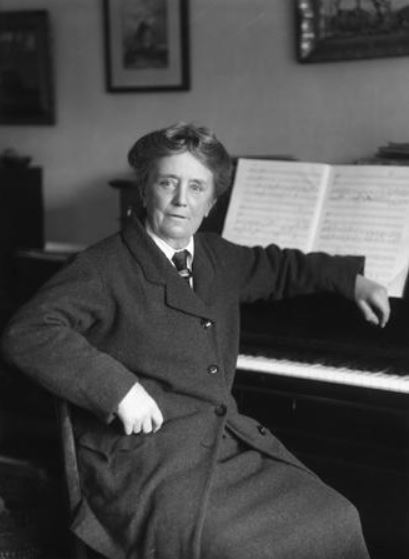
Opening a concert with Dame Ethel Smyth’s “On the Cliffs of Cornwall,” Prelude to Act II from The Wreckers was an interesting choice; however, a choice seemingly fitting of a composer who defied convention to the point of becoming an imprisoned suffragette. Some have submitted that the opera The Wreckers is thought to be the most important English opera composed in the 300-year period between Henry Purcell and Benjamin Britten. Principal oboist, Peter Cooper, and Michael Thornton, principal horn, helped support such a submission with the solo melodies they offered that became increasingly enticing as the work developed. The Colorado Symphony played with such sensitivity to ensemble balance, often replicating what has become expected of an audio recording that has undergone post-production editing.
The second piece offered was Violin Concerto No. 2 in G Minor, Op. 63 of Sergei Prokofiev, with soloist Stefan Jackiw. This season alone, Jackiw is scheduled to perform with the New York Philharmonic, Taiwan Philharmonic, and the China National Symphony, in addition to presenting multiple world premieres at Roulette, curating a series of programs for the Edinburgh Festival, and making a debut with the Junction Trio (Conrad Tao, piano; Jay Campbell, cello) at Carnegie Hall.
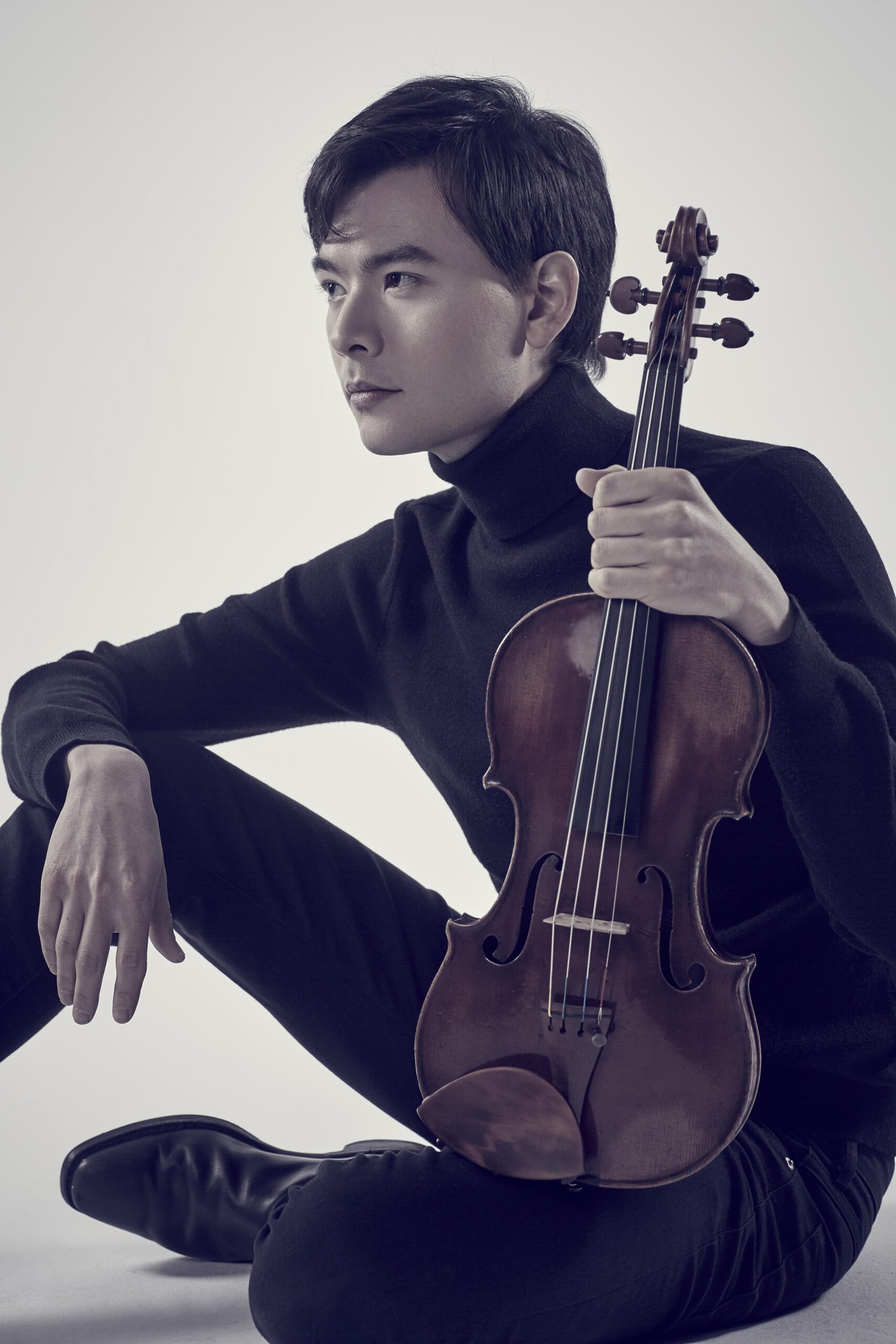
Jackiw’s intonation was impeccable and matched by the flute-oboe-clarinet sections throughout some rather exposed moments. The bassoon playing was equally impressive, although decidedly more present than what may have been expected. Maestro Märkl often asked the ensemble to play quietly to powerful affect, but when then asking for a more present volume, the result seemed to be an out-of-portion dynamic cliff that was navigated less gracefully in order to be achieved. Stefan Jackiw’s technical abilities towards the end of the Concerto were hypnotic with precision, much like the way musicality oozed from his soul throughout the 2nd movement. A final accelerando to end the composition left some in the orchestra catching up, but a tempo risk that should continue to be encouraged, nonetheless.
The Colorado Symphony ended the concert, or so the program suggested, with Symphony No. 3 in F Major, Op. 90, by Johannes Brahms. This worked proved to be the highlight of the program, in part to the way in which the cello section contributed to the composite. Seoyoen Min, who performs from the Fred and Margaret Hoeppner Principal Cello Chair, led powerfully throughout tutti melodic moments in the 3rd movement. Credit should also be given to principal trumpet, Justin Bartels, for using rotary trumpets on this piece. Brahms composed an ending that recedes in both activity and dynamic. The pacing of this section, in particular the final release, felt a bit abrupt. Fortunately for concertgoers, a planned encore of Brahms’ Hungarian Dance No. 5 left all happily bouncing out of the concert space.
Following performances within the Classics Series, conductors and/or soloists make themselves available for a question-and-answer session with audience members interested in extending their experience. Both Maestro Märkl and Jackiw participated, thoughtfully responding to a variety of questions about both the music and their lives. From the Prelude with Beeson, the performance, and the Talkback with conductor and soloist, one can quickly become rather invested to the Colorado Symphony – even more so when one is able to share such a thorough experience with someone special, as I was able to do with my first band director, Gary Hoffman.
It feels appropriate to offer the idiom that the sky is the limit for the Colorado Symphony, but the group already performs in the sky. To infinity and beyond, then, for the Colorado Symphony!
Frozen: Perfectly Fine
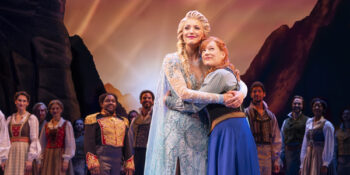
The film this musical is based on was such a hit in 2013 that anyone alive then or since then is at least aware of it, its characters, and can hum “Let it Go.” I’ve seen near infinite Frozen merchandise over the years, ranging all the way from boxed Mac & Cheese to men’s sweaters. I was a teenager when it came out and saw it in theaters with friends, enjoyed it and even bought the album off iTunes (possibly the last digital album I ever bought). In this review I’m going to assume that you’re seen it, because if you maintained the effort to avoid seeing it for the past eleven years you’ll have no interest in this review anyways.

Disney took its time making the adaptation, which made its Broadway debut in 2018, continuing until the COVID lockdown. The North American Tour began in 2019 and continued after the COVID interruption, playing its 1,000 performance earlier this year. Jennifer Lee, who wrote the film, did the book, and the original song-writers for the film, husband-wife duo Robert Lopez (co-creator of The Book of Mormon) and Kristen Anderson-Lopez wrote the new music for the Broadway adaptation, promising at least the potential of equally good songs.
Before going in to see it, my greatest hope for the Broadway adaptation was that the notable lopsidedness of its music would get balanced: the first half of the movie has seven fabulous songs, some almost back-to-back, yet the second half has only two, one of which is a reprise. Perhaps the plot would get fleshed out a little too: they’re orphaned as children and Elsa isn’t crowned until she comes of age, but there’s no a regent, or even anyone in an authority position. There’s nobody to take the command of the land when the princesses disappear except for some random foreign prince who is unofficially engaged to the younger princess. I also hoped Kristoff would be likable, his personality expanded beyond being a crude masculine stereotype.
The adaptation doesn’t give new depth, but parts are changed: Elsa is shown to have a little more compassion and care for others. Kristoff is indeed improved, now a somewhat brusque but kind and independent man who is an outsider rather than a loser. Hans is also better, maybe because they didn’t give him those creepy sideburns. The scheming ambassador from Weselton still basically does nothing, but is funnier. Sadly, though, Anna (my favorite character in the film) is now slightly annoying. Most notably, there are no rock trolls, but “Hidden Folk,” rustic people half-dressed in wild nordic furs. It’s an understandable choice, but it would have been delightful to watch a lavish puppet show for the trolls (the animated trolls do have a rather Muppety look). Instead, the Hidden Folk deliver the same lines while doing a squatting-swaying movement in an attempt to convey wildness.
The adaptation tries to add a few jokes for the parents by adding clumsy innuendos. Anna’s song “For the First Time in Forever,” has its tone shifted by these jokes, from being joyful and hopeful to a little, well, horny: Anna strokes a bust of a man’s muscular torso, and then later, when singing with Hans, puts her flat hand on his chest and slides it a few inches lower towards his crotch. It is unexpectedly awkward. This isn’t helped by the fact that the woman playing teenage Anna is clearly an adult. Usually innuendos make me chuckle, but these annoyed me, probably because they change the tone of the innocent Disney brand fairy tale.
Obviously, the music is a big part of the musical, particularly the new songs created specially for it. It was an impossible task. To begin with, most viewers are lovingly familiar with all the songs from the movie. So how can you insert new songs in the same story and not have them feel like interlopers? The new music is fine, but not particularly memorable, and at times feels a little retro-80’s pop unlike the film’s music. One musical choice I actively disliked was the replacement of the “For the First Time in Forever (Reprise)” when Anna finally confronts Elsa in her ice castle. It’s such a thrilling musical moment with an expert blending of their two contrasting melodies, and it was replaced with an unfamiliar song communicating mostly the same thing, except now without Anna. At least now the number of songs in the second act make it feel more balanced, as I had hoped.
The musical’s special effects have been talked up, and they aren’t bad. Most of the effects are flashes of light, sprinklings of snow, and well-designed projections casting a limn of frost over the stage. A few moments are surprising, ice-like confetti appearing from unexpected places, or when young Elsa and Anna build a moving Olaf from toys in their bedroom. My favorite effect is at the end, when Anna is frozen. The ensemble has been dancing around in all-white attire, personifying the blizzard, and suddenly they join her, draping a massive cloth over her and themselves. At that moment they become motionless and the projectors blast a perfectly designed image of frost over them. They truly look frozen. The moment that got the biggest gasp from the crowd is during Elsa’s “Let it Go.” In the film there’s a moment when she magically transforms her dress. Here they have her on a high portion of the stage and she dramatically throws her arms down to have the dress suddenly ripped off to reveal a sparkling dress underneath.

The special effects and costuming meet to create Olaf and Sven. Olaf, the dismemberable snowman, is a large chest-high puppet, attached to the actor playing the role. He moves the mouth and hands of the puppet, and the Olaf’s feet are attached to his own. The actor wears an all-white Scandinavian outfit with a funny hat. The puppet is fun to watch, and you can see the actor’s face for more detailed expressions. Sven, whom I found boring in the film, is the coolest thing on stage. The detailed design is cool, with an animatronic look and movement to its features, but containing a person who nimbly walks around on all fours. I found myself staring at Sven every moment he was on stage. To see a quick montage of the costume, piece by piece, see The Secret Life of Sven – The New York Times.
The costumes are lovely and lavish. Even the common people’s attire have many layers of cloth, which they use as they dance to create added movement. The ensemble’s choreography is fun, especially at the ball, but the main characters generally just stand and sing. The new song to start off the second act, “Hygge,” involves a goofy “nude” chorus line of sauna-goers who always manage to cover themselves up with tree branches, and it got a lot of laughs.
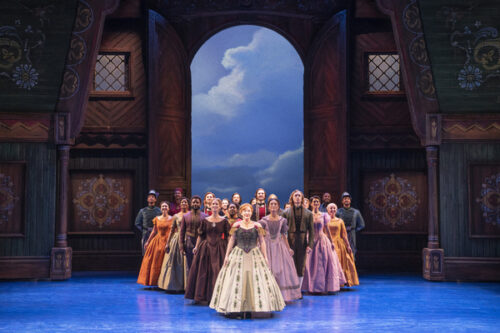
The set pieces are great, massive and with layers giving added depth to the stage. The backdrop is a large screen, and it’s used exactly as it should be: as a backdrop. It works well with the set pieces and deftly joins in with the special effects of frost and snow. My favorite set is the castle, with its attractive wood walls and designs.
I saw the show Wednesday, May 8, so the audience was smaller than it would have been had there not been tornadoes. A large swathe of the crowd was families with children, boys and girls. Most of the girls were in some degree of Elsa attire. I discovered that TPAC has booster seats for Jackson Hall. The kids behaved well, although at one point, when Olaf sings his song “In Summer,” there’s a classic joke, “Winter’s a good time to stay in and cuddle, but put me in summer and I’ll be a [comical pause] happy snowman!” Some little boy towards the front yelled out “Puddle” with uncontrollable enthusiasm in that moment of quiet and got everyone to laugh, including Olaf. During intermission kids were hyper and happy: the show kept them engaged and they seemed to enjoy it a lot. The musical is barely longer than the movie, and that is counting the one twenty minute intermission.
Caroline Bowman does a fantastic job as Elsa (a must when we’re all familiar with Idena Menzel’s version). Lauren Nicole Chapman has a strong, capable voice. Nicholas Edwards makes the best version of Kristoff, a marvelous singer and a winning actor. Preston Perez makes Hans actually charming and I wish we could see more of his villainous side. Jeremy Davis is eminently likable and has perfect comic timing as Olaf, puppeteering smoothly. Weselton is played by Evan Duff, who makes the character’s bad dancing hilarious. Dan Plehal played Sven the night I attended with impressive agility.
I took a lot of space here to say something simple: the musical is a solid adaptation of an excellent children’s film, and it faces all the usual limitations of adapting from animation to live action. Too big to fail, Frozen: The Broadway Musical would be a hit even if everyone involved completely dropped the ball. Luckily, they didn’t. Adults will find it good enough, superfans will automatically love it, and the kids will really enjoy it. For children new to Broadway Frozen could be a good way to start their experience.
Frozen will continue at TPAC’s Jackson Hall through May 18. For tickets and more information, see Disney’s Frozen | Broadway Shows in Nashville at TPAC or Disney FROZEN | The Broadway Musical.
The MCR Interview
Fall Dance Director Rebekah Hampton Barger on Dance, Chronic Pain and Her Collaboration with Chatterbird
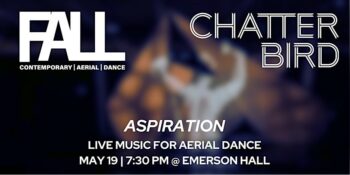
Rebekah Hampton Barger is the Founder and Artistic Director of Nashville-based aerial and contemporary ballet company Fall. She recently zoomed with MCR journalist Bethany Morgan regarding her work, and approaching collaboration with Chatterbird. The following is a recording of that conversation (please like, subscribe, and share!):
LATINO EN NASHVILLE, May, 2024

(English version here)
Este mes de mayo la música latina se viene en modo: ¡celebración! La “generación Y” será inmensamente complacida con los clásicos del Rock en español y del vallenato. Nuevamente los ritmos tropicales reunirán en la pista los movimientos desinhibidos de todo aquel que se rinda ante el repique de las congas.
GIOVANNI RODRÍGUEZ & 12 MANOS 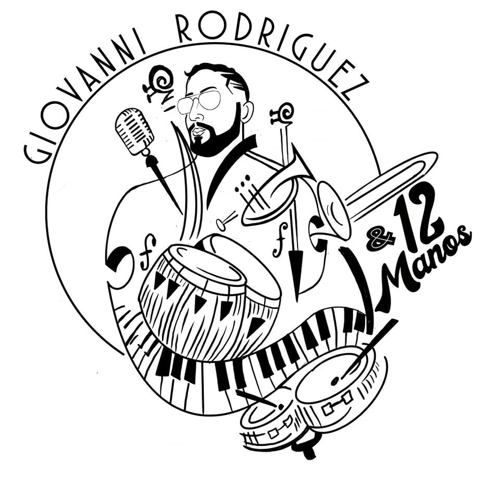
Rudy’s Jazz Room
Todos los lunes
9:00 PM
Entradas $19.44+
Cada lunes del mes en Rudy’s Jazz Room al caer la noche se despierta el sol caribeño con el repique de las congas. Giovanni Rodríguez, un artista integral de sangre dominicana y radicado en Nashville, es el director de este proyecto que cuenta también con destacados músicos en la escena musical de la ciudad. Para este evento, el recinto dispone de una pista de baile para vibrar con los ritmos coloridos de la salsa, la bachata y el jazz latino.
DANIEL CALDERÓN Y LOS GIGANTES DEL VALLENATO (Colombia)
Diamante Night Club
Jueves 9 de mayo
11:00 PM
Entradas: $40+
Como parte de su gira por los Estados Unidos, la agrupación Los Gigantes del Vallenato dirigida por su vocalista Daniel Calderón, acompañarán la celebración del Día de la Madre en uno de los clubes nocturnos latinos más reconocidos de la ciudad. Los asistentes podrán corear los inolvidables éxitos del vallenato en los que se destacan Infiel, Cómo Te Atreves, Después del Adiós y Aventura. Las puertas estarán abiertas a partir de las 9:00PM y el show comenzará a las 11:00PM.
LOS INQUIETOS DEL VALLENATO (Colombia) 
Plaza Mariachi
Viernes 10 de mayo
9:00 PM – 1:00 AM
Entradas $60+
Nelson Velásquez y Emerson Plata han logrado consolidar esta agrupación durante los últimos 25 años como una de las más representativas del país en el género del vallenato. La música de Los Inquietos está siempre presente en las parrandas vallenatas, sobre todo cuando la fiesta se torna romántica. Su primer éxito Volver ha resonado en toda la esfera sirviendo de embajador de este ritmo auténtico colombiano que invade de alegría y nostalgia. El día de la madre es la fecha perfecta para acompañar esta celebración con canciones que inevitablemente traerán a la memoria la sencillez del día a día con la radio encendida.
FM DE ZACAPA Y LA MARIMBA ORQUESTA LA GRAN MANZANA (Guatemala) 
Plaza Mariachi
Viernes 10 de mayo
9:00 PM – 2:00 AM
Entradas $50
Al son de los ritmos tradicionales de Guatemala FM de Zacapa y La Marimba Orquesta La Gran Manzana deleitarán a las madres en su día, con una noche de cumbia, marimba y baile. El sonido versátil de estas dos agrupaciones está en su mezcla de folklor y arreglos contemporáneos. El público de cualquier nacionalidad podrá disfrutar de una alegre celebración que combina los timbres del caribe con la profundidad de los teclados amaderados.
LA FACTORÍA (Panamá)
Bucanas
Viernes 10 de mayo
9:00 PM
Entradas $35+
No había rumba o miniteca en la década de los 2000 donde no se bailaran los pegajosos éxitos Todavía y Que Me Maten de La Factoría. El estilo fresco y romántico del reggaetón y el género urbano de esta agrupación, la hizo merecedora de varios premios incluido un disco de oro y más de 200.000 copias vendidas con su álbum debut. Actualmente su vocalista ha mantenido el legado de esta agrupación bajo el nombre artístico de Demphra.
NOW! THAT’S WHAT I CALL A LATIN NIGHT! A BAD BUNNY AFTERPARTY 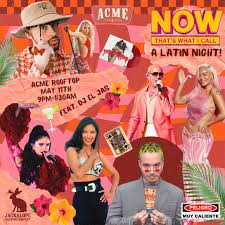
Acme Feed and Seed
Viernes 11 de mayo
9:00 PM – 1:30 AM
Entrada libre
Para no dejar morir la noche luego de un concierto lleno de ritmo y energía con uno de los artistas más reproducidos del momento, Acme Feed and Seed tiene preparado un evento sin precedentes con la música crossover de DJ El Jas y cocteles temáticos para la ocasión. Sumérgete en la atmósfera latina mientras vibras al ritmo de los éxitos más calientes del reggaetón y el trap.
LA SONORA DINAMITA (Colombia)
LOS KUMBIA BROTHERZ (México)
Plaza Mariachi
Domingo 12 de mayo
9:30 PM – 11:00 PM
Entradas $10
Para completar este fin de semana de celebración, qué mejor que una noche bailable al ritmo de la cumbia. Desde Cartagena llega la Sonora Dinamita, una reconocida agrupación con más de 60 años de carrera y su sello auténtico de la cumbia colombiana. Originarios de México y radicados en Memphis, Los Kumbia Brotherz se unirán a esta rumba con el tradicional sonido del güiro y el teclado eléctrico.
VILMA PALMA E VAMPIROS (Argentina)
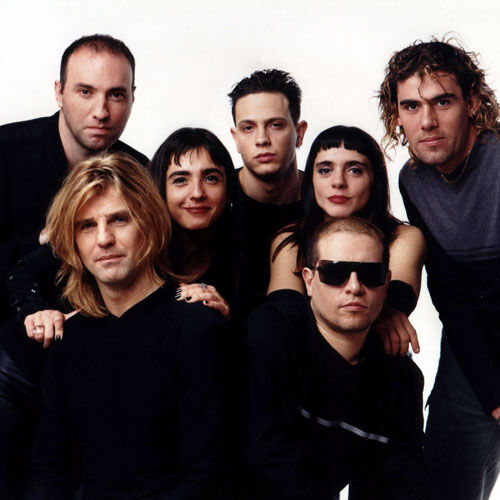
ELEFANTE (México)
Bucanas
Viernes 17 de mayo
9:00 PM
Entradas $65+
El rock y el pop latino llegan a Nashville en una combinación explosiva de dos reconocidas bandas de los 90’ que con sus éxitos dejaron una huella imborrable en la juventud de esa generación. Las letras divertidas y escuetas de Vilma Palma E Vampiros se escuchaban a todo volumen como símbolo de rebeldía. Por otro lado, Elefante más romántico y profundo no escatimaba en versos para desahogarse. El estilo de estas dos agrupaciones fue trasformando la balada latina con un golpe más urbano y atractivo para permanecer latente en una audiencia de afición rockera.
CHIMBALA
Ibiza Louge Nashville
Sábado 18 de mayo
9:00 PM
Entradas $50+
La fusión entre la música urbana y el deambow, han posicionado la carrera de Chimbala como uno de los artistas más influyentes en la escena dominicana y del continente. Éxitos como Maniquí, El Boom, y Tumbala, superan los 60 millones de vistas en Youtube y han liderado la lista Latin Airplay de los Billboard. En el 2021 y 2022 recibe la certificación de la RIAA en triple platino, platino y oro por el éxito de sus sencillos Loco y Wow BB.
SUNDAY FIESTA 
Hotel Preston
Domingo 26 de mayo
2:00 PM – 6:00 PM
Donación $5+
El proyecto Nashville Rueda que promueve las danzas cubanas a través de presentaciones y clases para todas las edades y niveles, será el anfitrión del “Sunday Fiesta.” Esta celebración tropical convoca a todos los amantes de la salsa, la bachata y la timba para que disfruten del baile con su familia y sus amigos. Para asistir no es necesario ser un experto bailarín, sin embargo, de 2:00 a 2:30 PM se dará una lección gratuita con los pasos básicos de cada ritmo. Además de la música y la danza, Blackwood Restaurant tendrá servicio completo de comidas y bebidas durante todo el evento.
ALEX MANGA (Colombia)
Diamante Night Club
Viernes 31 de mayo
11:00 PM
Entradas $40+
Para cerrar el mes de las Madres, el reconocido cantante del vallenato Alex Manga, encenderá de nuevo la nostalgia de sus seguidores con canciones como A pesar de Todo y Déjala. Luego de participar en agrupaciones como Dinastía Vallenata y Los Diablitos, Alex Manga en su carrera en solitario ha preservado el sonido tradicional del género con su cálida cadencia vallenata. Las puertas estarán abiertas a partir de las 9:00PM y el show comenzará a las 11:00PM.
